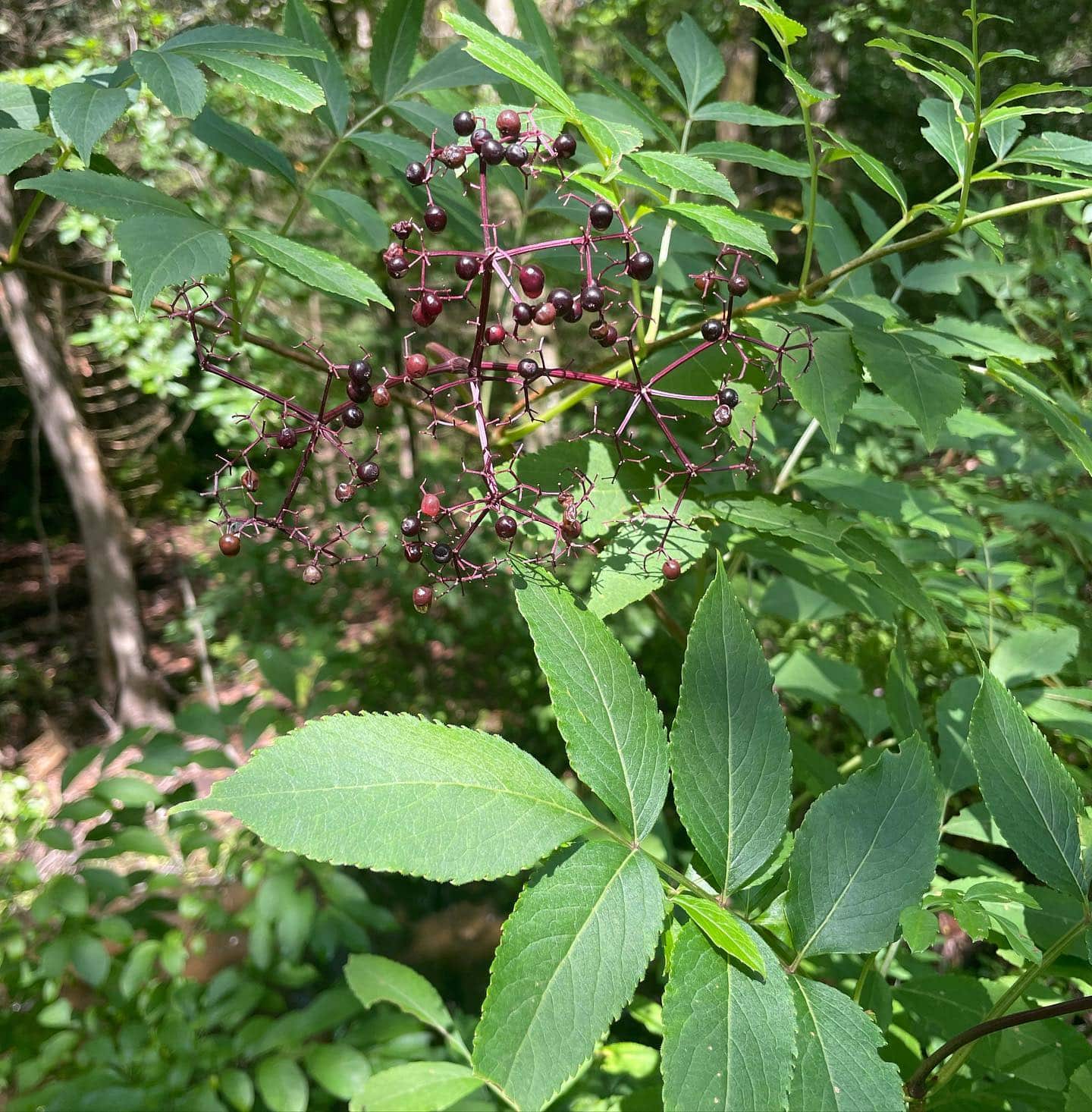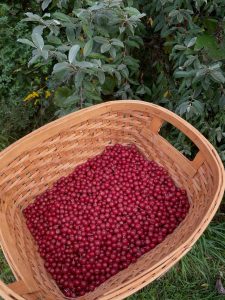Page Created by Connecticut Foraging Club
Upcoming Events | Meet the Instructors | Plant Archive | Mushroom Archive
----------------
Upcoming Events | Meet the Instructors | Plant Archive | Mushroom Archive
----------------
Elderberries (Sambucus canadensis) are a native woody shrub that like to grow near water.

Elderberries hang down in a cluster at the end of the branch. The leaves grow in 5-11 leaflets that are opposite and serrated.

Elderberry leaves and stems are toxic. Berries should be cooked, and seeds removed to avoid stomach upset.

Elderberry juice can be made by boiling and then simmering berries and water for 30 minutes. Mash berries and then strain to remove seeds.

In June-July, the elder tree produces flowers that are edible after cooking. Raw elderflowers are mildly toxic and have an unpleasant taste.

Elderflowers can be turned into a cordial, vinegar, or fritters.

Elderberries and elderflowers have immune enhancing and antiviral properties.
--
Written by Amy Demers, founder of the Connecticut Foraging Club. To learn more about foraging in Connecticut, check out our upcoming classes.






